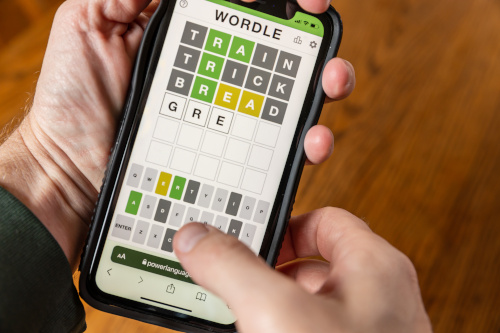“Did you get the Wordle today?” What initially began as something Josh Wardle created to serve as a personal daily game has become a household name, with users sharing their Wordle progress on social platforms and urging friends to start playing. And now, teachers are using Wordle, along with other games with viral status, to boost student engagement.
The popular game tasks users with guessing–in six guesses–a five-letter word. When users guess a word, a green square indicates they have guessed a correct letter in its correct spot. A yellow square indicates that the letter is in the word, but the user has put it in the wrong spot. And a gray square indicates that the letter is not in the word.
In a January tweet, teacher Samantha Morra shared how teachers can create their own custom Wordle words of any length–a great way to add longer and more challenging vocabulary or other relevant words and concepts to a lesson.
College professor Michael Spencer explored the way game design and user experience can encourage good teaching practice–namely, that making mistakes is OK, and that students learn as much from their mistakes as they can their successes.
Some educators have suggested using Wordle with younger students to teach them how to navigate and develop keyboarding skills.
Wordle has also invoked passionate debates and lengthy social media discussions among statistics enthusiasts, who argue over the best “first word” to use. Different strategies often enter these conversations–is it better to use all your guesses to guess the correct word, or should you use one (or more) guesses to eliminate letters, purposely not using any letters you know to be in the correct word?



:max_bytes(150000):strip_icc()/Health-GettyImages-2167292938-fcfceb4826db4b7a801d51e0dbd0cb05.jpg)


